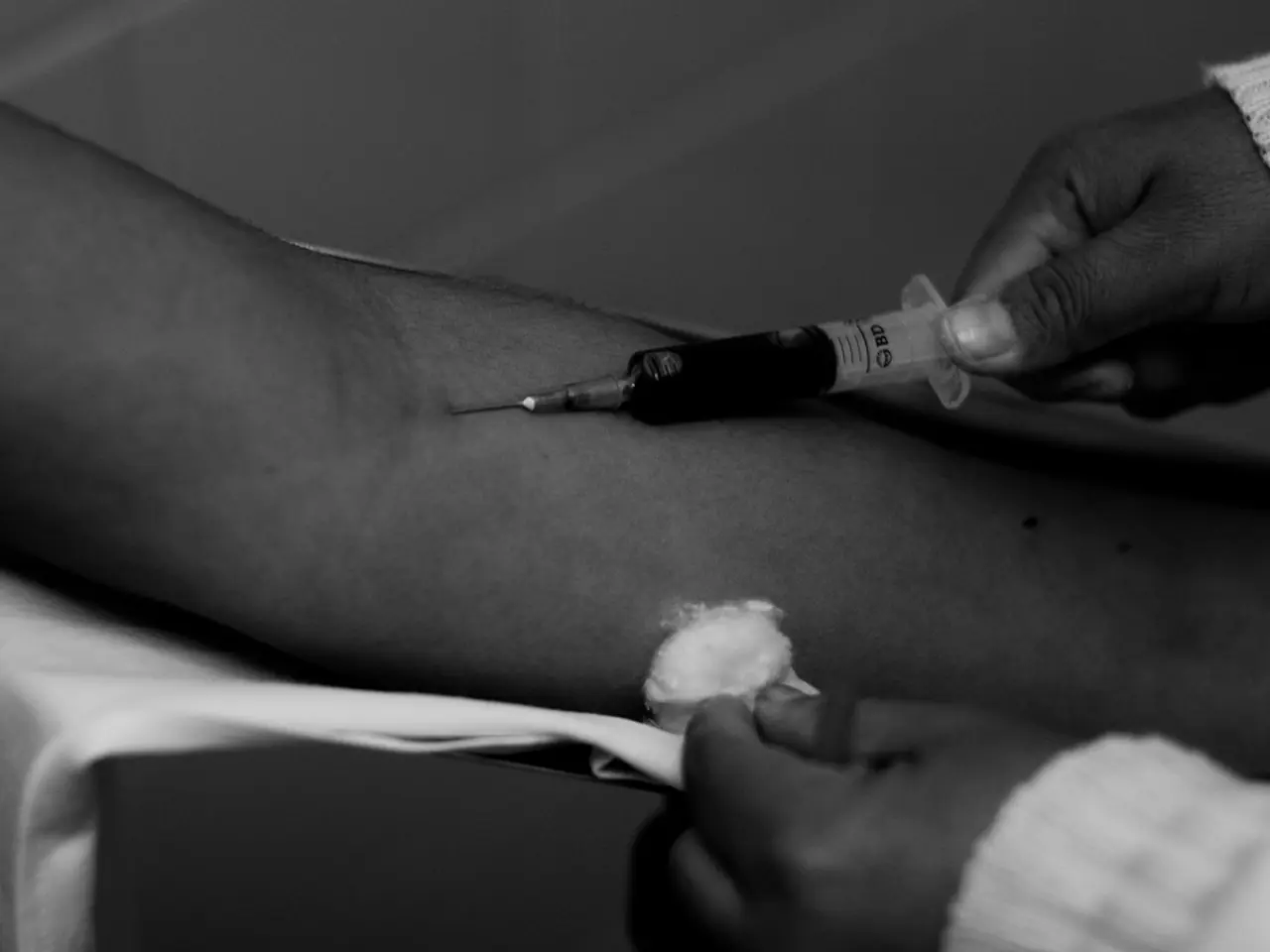Acute or chronic immune system reaction in the body, known as Graft-versus-Host Disease, affecting various organs after a bone marrow or stem cell transplant.
Graft-Versus-Host Disease (GVHD) is a potentially life-threatening complication that can occur after a bone marrow or stem cell transplant. This condition arises when the donated bone marrow or stem cells view the recipient's body as foreign and attack it.
Diagnosis and Staging of GVHD
GVHD is diagnosed through a combination of medical history, physical examination, lab tests, biopsies, and imaging studies. Accurate diagnosis and staging are crucial in determining the best course of treatment and improving patient outcomes. The most commonly used staging system is the Glucksberg grading system.
GVHD can be classified into two main types: acute and chronic. Acute GVHD occurs within the first 100 days after the transplant and can cause symptoms such as skin rash, diarrhea, and liver damage. On the other hand, chronic GVHD occurs more than 100 days after the transplant and can cause symptoms such as skin thickening, joint stiffness, and dry eyes.
Treatment of GVHD
The goal of treating GVHD is to reduce the severity of GVHD, prevent chronic GVHD, and improve patient outcomes. Strategies to improve the prognosis for patients with GVHD include early detection and treatment, aggressive treatment, and supportive care.
Systemic corticosteroids, such as prednisone, are the primary treatment for acute GVHD and work by suppressing the immune system and reducing inflammation. In addition to corticosteroids, other treatment options for GVHD include calcineurin inhibitors (e.g., cyclosporine, tacrolimus), antithymocyte globulin, phototherapy, extracorporeal photopheresis, immunoglobulin therapy, and second-line therapies such as ruxolitinib and ibrutinib.
Lifestyle Management and Prognosis
Lifestyle changes, such as staying hydrated, following a healthy diet, and practicing good skin care, can help manage GVHD symptoms and improve overall health. Factors affecting the prognosis for patients with GVHD include severity of symptoms, response to treatment, and overall health.
Risk Factors for GVHD
Major risk factors for GVHD include HLA mismatch, age, donor type, intensity of conditioning regimen, and history of previous transplants. Understanding the differences between acute and chronic GVHD, as well as the risk factors that contribute to this condition, can help in navigating the complexities of GVHD and developing an effective management plan.
Resources for Further Information
For more information about GVHD, reputable online resources include the National Institutes of Health (NIH) and the American Cancer Society (ACS).
In severe cases of GVHD, bone marrow transplantation may be necessary to replace the damaged immune system. While the prognosis for patients with GVHD varies depending on the severity of symptoms, the response to treatment, and the overall health of the patient, early detection, aggressive treatment, and supportive care can significantly improve outcomes.
Read also:
- Funds amounting to approximately 1.17 million euros designated for local meetings regarding nursing practices
- Advocating for nationwide Covid-19 vaccinations over targeted vaccinations for high-risk groups could potentially save thousands of additional lives in the United States.
- Competing strategies for addressing infertility come under scrutiny in the halls of Congress
- High school football in Ohio called off due to a legal dispute claiming players suffered violent hazing incidents






